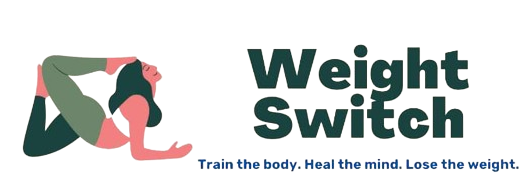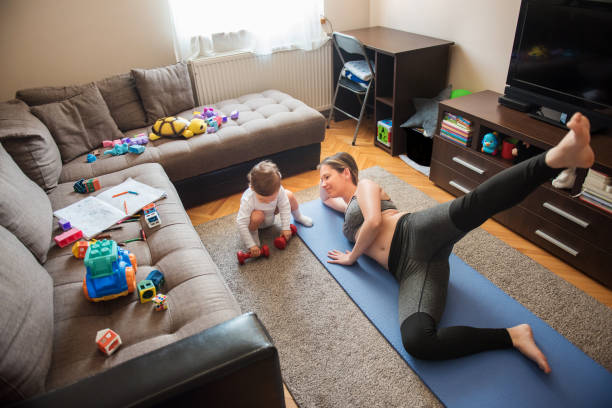Best cardio exercises for weight loss at home
Looking to shed some pounds from the comfort of your own home? Cardio exercise might just be the answer you’re looking for.
We explore what exactly cardio exercise is, how it can help with weight loss, and the best cardio exercises you can do at home.
From jumping jacks to dancing, we have a variety of options to keep you moving and burning calories. Lace up those sneakers and get ready to sweat!
What is Cardio Exercise?
Cardio exercise, short for cardiovascular exercise, refers to any physical activity that elevates your heart rate and enhances your body’s ability to utilize oxygen efficiently.
Engaging in regular cardio exercise has numerous benefits for overall health. As your heart rate increases during cardio activities, your cardiovascular system strengthens, leading to improved circulation and a reduced risk of heart disease. Cardio workouts boost metabolism, helping you burn calories more effectively and maintain a healthy weight. Aerobic activities, such as running, cycling, or swimming, can also enhance endurance levels by improving lung capacity and oxygen delivery to muscles. Different intensity levels, from low to high, offer varying benefits, including increased fat burning, improved mood, and better stress management.
How Does Cardio Exercise Help with Weight Loss?
Cardio exercise aids in weight loss by burning calories, increasing energy expenditure, promoting fat loss, and positively impacting body composition.
Engaging in cardiovascular activities like running, cycling, or swimming can elevate your heart rate and strengthen your cardiovascular system, which plays a significant role in enhancing your overall metabolic rate.
By regularly incorporating cardio into your workout routine, you can create a sustained calorie deficit, helping your body tap into stored fat reserves for energy. This process of utilizing fat stores for fuel contributes to a more effective weight loss journey, making cardio exercises a valuable tool in achieving your fitness goals.
What Are the Best Cardio Exercises for Weight Loss at Home?
For effective weight loss at home, incorporating body weight exercises, HIIT routines, cycling, jumping rope, and running can provide a comprehensive workout targeting multiple muscle groups.
Including activities like dancing, aerobics, and stair climbing in your routine can add variety and challenge different muscle groups while keeping your workouts engaging. Motivation plays a crucial role in sustaining a consistent workout schedule.
Engaging in cardio exercises not only burns calories but also strengthens the heart and lungs. For example, cycling engages the lower body muscles, while jumping rope works the calves and shoulders. Mixing up exercises helps prevent plateaus and keeps the body adapting, enhancing overall fitness levels.
Jumping Jacks
Jumping jacks are a classic cardio exercise that combines aerobic benefits, calorie-burning potential, and an element of fun while engaging multiple muscle groups.
One of the key benefits of incorporating jumping jacks into your workout routine is their efficiency in elevating your heart rate, making them an excellent cardiovascular exercise. This increased heart rate not only enhances your overall endurance but also helps in burning a significant amount of calories, making jumping jacks a great choice for individuals looking to shed some extra pounds.
The repetitive motion of jumping jacks targets various muscle groups, including the calves, quadriceps, shoulders, and core, leading to improved muscle tone and overall body strength.”
High Knees
High knees, a staple of interval training, elevate heart rate, enhance endurance, and contribute to improved body composition, making them an effective choice for tracking progress.
Adding high knees to your workout routine not only boosts cardiovascular conditioning but also helps in sculpting lean muscle and burning calories efficiently. The dynamic nature of this exercise not only improves agility but also strengthens the core muscles.
By incorporating variations like adding a jump or increasing the speed, you can intensify the workout and challenge your body to new limits. Consistently practicing high knees can lead to noticeable improvements in your fitness levels and overall body composition over time.
Mountain Climbers
Mountain climbers offer a dynamic cardio workout that engages the core muscles, provides strength training benefits, and serves as a motivational exercise with visible results.
This exercise, which mimics the action of climbing a mountain, not only boosts cardiovascular endurance but also helps in sculpting and toning the core muscles. By incorporating mountain climbers into your routine, you can experience significant improvements in overall strength and muscle definition. The high-intensity nature of this movement not only challenges the core but also activates various muscle groups, making it a full-body workout. Over time, consistent practice of mountain climbers can lead to enhanced endurance, increased metabolism, and improved physical appearance.
Burpees
Burpees are a full-body cardio exercise that boosts metabolism, utilizes body weight effectively, and requires proper technique for optimal results.
Engaging in a session of burpees involves dynamic movements that target multiple muscle groups, including the chest, arms, shoulders, core, and legs. This comprehensive workout not only elevates the heart rate for cardiovascular benefits but also enhances muscle endurance and strength.
The combination of explosive jumps, push-ups, and squats in a single burpee routine creates a high-intensity exercise that can significantly elevate the metabolic rate, promoting calorie burn even after the workout is complete. To maximize the benefits of burpees, it is crucial to maintain proper form, such as keeping the body aligned during each phase of the exercise, landing softly to reduce impact on joints, and engaging the core for stability and balance.
Jumping Rope
Jumping rope is a classic cardio exercise that delivers aerobic benefits, burns calories efficiently, enhances endurance, and offers various techniques for skill progression.
Engaging in regular jump rope sessions can significantly improve cardiovascular fitness by strengthening the heart and lungs. This dynamic exercise torches calories at a high rate, making it an excellent choice for weight loss and maintenance.
The repetitive motion of jumping rope enhances stamina and promotes greater endurance levels over time. As one masters different techniques like double unders, crossovers, and side swings, not only does the workout become more challenging but also more enjoyable and rewarding.
Squat Jumps
Squat jumps are a powerful cardio exercise that targets leg muscles, enhances lower body strength, requires proper technique for efficacy, and allows for measurable progress over time.
Engaging in squat jumps activates the quadriceps, hamstrings, and glutes, making it an excellent choice for lower body workouts. The explosive nature of this movement helps in developing muscle power and enhancing athletic performance. Ensuring correct form, such as keeping the back straight and knees aligned with the toes, is crucial to prevent injuries and maximize the effectiveness of the exercise.
By tracking metrics like jump height or the number of repetitions, individuals can monitor their progress and make adjustments to continually challenge themselves for skill advancement.
Running in Place
Running in place is a versatile cardio exercise that can be done indoors or outdoors, boosts metabolism, adds an element of fun to workouts, and requires minimal equipment.
Whether you’re in the comfort of your living room or enjoying the fresh air outside, running in place provides a convenient way to get your heart rate up and burn those calories. This adaptable exercise can seamlessly fit into your indoor workout routine when the weather isn’t cooperating, or serve as a dynamic warm-up before hitting the trails for an outdoor run.
Not only does it rev up your metabolism, but the repetitive motion can also help improve coordination and strengthen your lower body muscles. Plus, the rhythmic motion of running in place can make your workout more engaging and enjoyable, keeping you motivated to push yourself further.
Dancing
Dancing is a dynamic cardio activity that offers aerobic benefits, significant energy expenditure, muscle toning effects, and serves as a motivational form of exercise.
It’s not just about moving to the rhythm; dancing engages multiple muscle groups, enhancing strength and flexibility.
Different dance styles like salsa, hip-hop, ballet, and Zumba vary in their aerobic intensity, providing options for individuals with diverse fitness goals.
The upbeat music and social atmosphere of dance classes can boost motivation, making it easier to stick to a regular workout routine.
The coordination and balance required in dancing contribute to improved body awareness and posture, promoting overall physical well-being.
Swimming
Swimming is a low-impact cardio exercise that engages the entire body, builds endurance, and offers various techniques for stroke efficiency and fitness improvement.
Being immersed in water reduces the stress on joints and muscles, making it ideal for individuals of all ages and fitness levels. By incorporating movements like strokes, kicks, and breathing techniques, swimming provides a holistic workout experience. It not only strengthens the core, arms, and legs but also enhances cardiovascular health. Focusing on proper form and technique while swimming can maximize efficiency and prevent injury, ensuring a safe and effective workout.
10. Cycling
Cycling is a versatile cardio exercise that can be done outdoors or indoors, enhances endurance, promotes calorie burn, and offers options for various equipment setups.
Indoor cycling is a popular choice for many fitness enthusiasts as it allows for a controlled environment regardless of weather conditions. Indoor cycling classes often incorporate music and motivational instructors to keep you engaged during your workout.
On the other hand, outdoor biking provides the opportunity to explore scenic routes, challenge yourself with different terrains, and enjoy the fresh air. Whether you prefer the convenience of indoor training or the adventure of outdoor biking, cycling offers a dynamic workout that can be tailored to your fitness goals.
How Often Should You Do Cardio for Weight Loss?
To achieve weight loss goals effectively, establishing a consistent cardio routine, determining the right frequency based on individual needs, and tracking progress are essential for obtaining optimal results.
Consistency in your cardio workouts is key to seeing progress in your weight loss journey. It’s not just about doing the same routine every day, but also about challenging your body and adapting your cardio sessions as you progress. By monitoring your progress regularly, you can make necessary adjustments to your frequency and intensity levels.
Remember, everyone’s body responds differently, so it’s important to tailor your cardio schedule to fit your personal goals and fitness level for sustainable results.
What Are Some Tips for Doing Cardio at Home?
Engaging in cardio workouts at home can be enhanced by following various tips and techniques to stay motivated, optimize performance, and make effective use of available equipment.
- One effective way to maintain motivation during home cardio sessions is to mix up your routines regularly. This can prevent boredom and challenge your body in new ways.
- It’s also important to set specific goals for each workout session, whether it’s increasing your endurance, speed, or simply completing a longer workout.
Proper technique is crucial for maximizing results, so pay attention to your form and breathing. Investing in quality equipment such as a reliable treadmill or stationary bike can significantly enhance your home workout experience.
Set a Schedule
Setting a cardio schedule that aligns with your routine fosters consistency, ensures time efficiency, and enables tracking progress towards fitness goals.
Integrating cardio workouts into your daily schedule not only helps in managing time effectively but also plays a crucial role in maintaining motivation and accountability. By setting specific times for your cardio sessions, you create a habit that becomes a natural part of your routine, making it easier to stay committed.
Consistency is key when it comes to maximizing the benefits of cardiovascular exercise. Tracking your progress allows you to monitor improvements in endurance, speed, and overall fitness level, motivating you to push your boundaries further.
Create a Workout Space
Designing a dedicated workout space at home for cardio exercises enhances the exercise environment, ensures access to necessary equipment, and boosts motivation for consistent workouts.
Having a designated area solely for your cardio routines not only helps in keeping your exercise equipment organized but also creates a physically and mentally stimulating environment that supports your fitness goals.
When your workout space is well-prepared and free from distractions, you are more likely to stay focused and committed to your exercise regimen. By setting up a space that is designed specifically for cardio workouts, you can create a conducive atmosphere that inspires you to push yourself and achieve your fitness aspirations.
Warm Up and Cool Down
Incorporating warm-up and cool-down routines in cardio workouts is crucial for preparing the body, optimizing performance, regulating heart rate, and reducing the risk of injuries.
During a warm-up session, it’s essential to include dynamic stretches to increase blood flow and flexibility, such as leg swings, arm circles, and lunges. These movements help to loosen muscles and joints, priming them for the upcoming activity.
Once the cardio session is complete, a cool-down period enables the heart rate to gradually return to its resting state, promoting recovery and reducing muscle soreness. Incorporating static stretches during this phase, focusing on key muscle groups like hamstrings and calves, can aid in improving flexibility and preventing post-exercise stiffness.
Use Household Items for Equipment
Utilizing common household items creatively as workout equipment for cardio exercises offers a resourceful and convenient solution for engaging in bodyweight exercises without specialized gear.
For instance, a sturdy chair can serve as a stepping platform for step-ups or tricep dips, while a set of heavy books can act as makeshift dumbbells for bicep curls or overhead presses. Using a backpack filled with books or water bottles can add resistance to squats or lunges, transforming a simple exercise into a more challenging workout. These DIY fitness gear alternatives not only save money on expensive gym equipment but also make working out at home more accessible and versatile.
Stay Motivated
Sustaining motivation in cardio routines is vital for long-term progress, achieving desired results, incorporating self-care practices, and implementing effective workout tips.
One effective strategy for staying motivated during cardio sessions is to track your progress. Keeping a log of your workouts, noting improvements in endurance or speed, can boost your confidence and drive. Celebrating small victories along the way, such as reaching a new distance goal or setting a personal best time, can provide positive reinforcement.
Prioritizing self-care, ensuring you get enough rest, proper nutrition, and hydration, is also crucial for maintaining motivation. By following these principles consistently, you can build momentum towards your fitness goals and cultivate a sense of achievement.


 English
English 




















































































